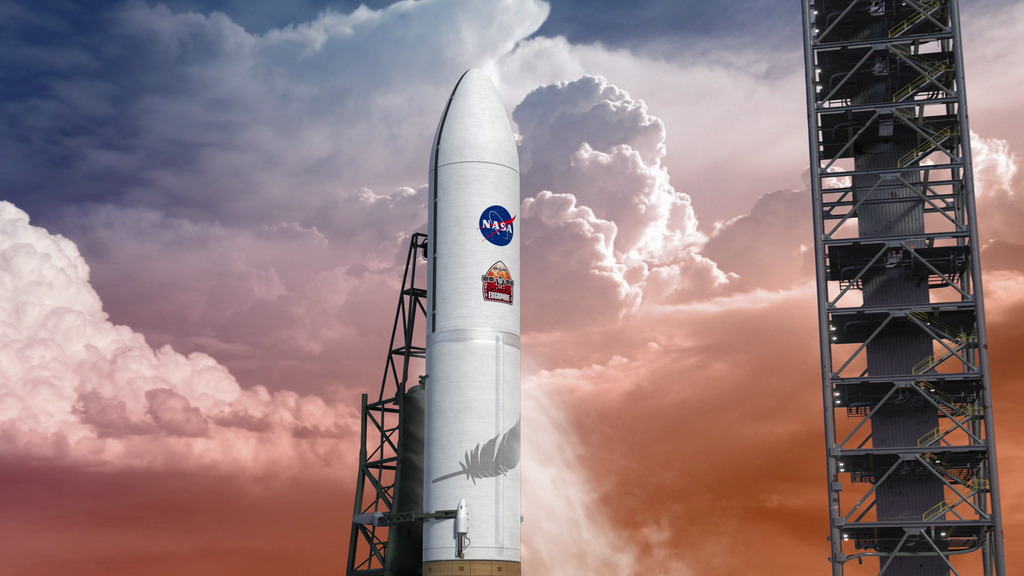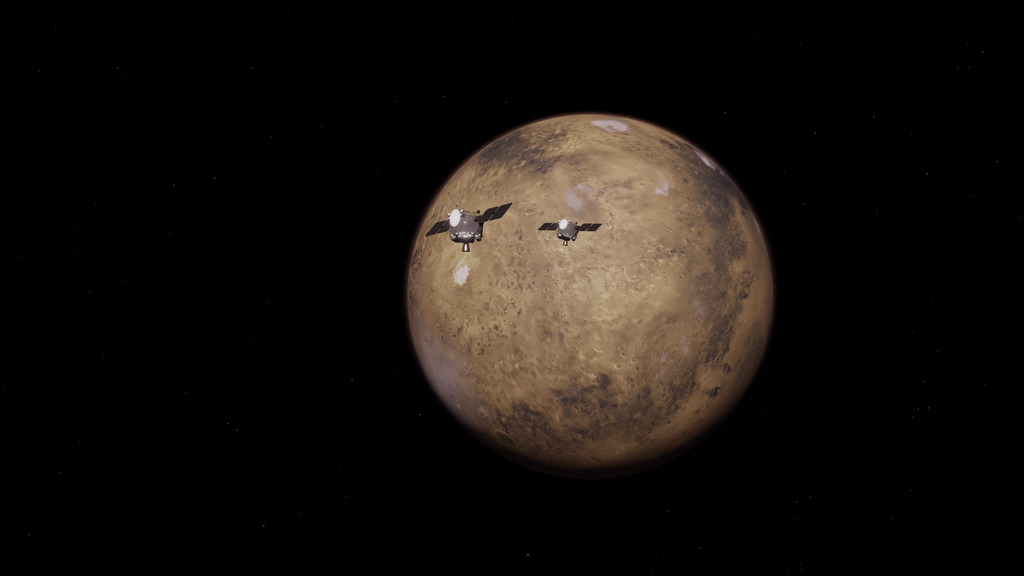ESCAPADE Trajectory Animations
The Escape and Plasma Acceleration and Dynamics Explorers, or ESCAPADE, mission will use two identical spacecraft to investigate how the solar wind interacts with Mars’ magnetic environment and how this interaction drives the planet’s atmospheric escape. The first multi-spacecraft orbital science mission to the Red Planet, ESCAPADE’s twin orbiters will take simultaneous observations from different locations around Mars to reveal the planet’s real-time response to space weather and how the Martian magnetosphere changes over time.
The ESCAPADE mission is being carried into orbit on the second launch of Blue Origin’s New Glenn rocket (NG-2) and is scheduled to launch in November 2025 from Cape Canaveral, Florida. New Glenn is a single-configuration, heavy-lift orbital launch vehicle capable of routinely carrying both spacecraft and people to low Earth orbits, geostationary transfer orbits, cislunar orbits (between Earth and the Moon), and beyond via Earth-departure orbits like the one required for ESCAPADE. The vehicle is named after John Glenn, the first American astronaut to orbit Earth.
The ESCAPADE mission is managed by the Space Sciences Laboratory at the University of California, Berkeley, with key partners Rocket Lab, NASA's Goddard Space Flight Center, Embry-Riddle Aeronautical University, Advanced Space LLC, and Blue Origin.
Below are animations demonstrating the different phases of the mission's trajectory from traveling from Earth to Mars to implementing its science orbits around the Red Planet.
ESCAPADE - Traveling from Earth to Mars (View 1)
ESCAPADE's twin spacecraft will launch from Cape Canaveral, Florida, and head toward Mars when Earth and the Red Planet are aligned.
The dark blue line is Earth's orbit, the red line is Mars' orbit, and the light blue line is ESCAPADE's trajectory.
Credit: Matt Bollinger/Advanced Space
ESCAPADE - Traveling from Earth to Mars (View 2)
ESCAPADE's twin spacecraft launches from Cape Canaveral, Florida, and heads towards Mars when Earth and the Red Planet are aligned.
The dark blue line is Earth's orbit, the red line is Mars' orbit, and the light blue line is ESCAPADE's trajectory.
Credit: Matt Bollinger/Advanced Space
ESCAPADE - Loiter Orbit
To save fuel, previous Mars missions have had to launch when Earth and Mars are aligned in their orbits. However, ESCAPADE is pioneering a new strategy that allows Mars-bound spacecraft to launch almost anytime.
Instead of launching directly to Mars, the ESCAPADE spacecraft will loop around the Earth-Sun Lagrange point 2 (L2), in an “Earth-proximity” or “loiter” orbit that allows the spacecraft to wait until November 2026, when the planets are aligned, to head to Mars.
Credit: Matt Bollinger/Advanced Space
ESCAPADE - Science Orbit A
After ESCAPADE reaches Mars, the two spacecraft will arrange themselves in their first science formation, in which the twin spacecraft will follow each other in the same orbit, passing through the same areas at different times to uncover when and where changes are happening at Mars. This science campaign will last for six months.
Credit: Matt Bollinger/Advanced Space
ESCAPADE - Science Orbit B
In ESCAPADE's second science formation, the two spacecraft will have different orbits, with one traveling farther from Mars and the other staying closer to it. Planned to last for five months, this second formation aims to study the solar wind and Martian magnetosphere simultaneously, allowing scientists to investigate how Mars responds to the solar wind in real time.
Credit: Matt Bollinger/Advanced Space
Credits
Please give credit for this item to:
NASA's Goddard Space Flight Center
-
Producers
- Lacey Young (eMITS)
- Joy Ng (eMITS)
-
Writer
- Vanessa Thomas (eMITS)
Release date
This page was originally published on Thursday, November 13, 2025.
This page was last updated on Thursday, November 6, 2025 at 3:54 PM EST.

